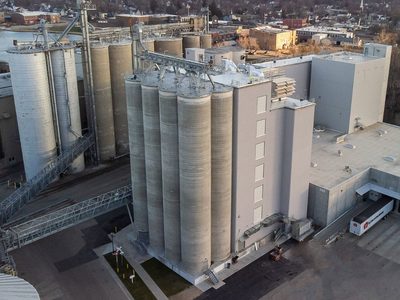Photo courtesy of Adobe stock.
“Domestic supplies of non-GMO corn and soybeans increased steadily in 2016, as growers converted acreage and captured moderate market premiums,” said Dan Kowalski, director of the Knowledge Exchange Division at CoBank. “Transitioning to organic production, however, is a multi-year, risk-reward calculation that’s likely holding some U.S. growers back from taking advantage of the market opportunity.”
Animal feed for organically raised dairy, beef, pork and poultry products, and ingredients used in organic consumer packaged goods are the two principal markets for organically produced grains, according to the report. For U.S. farmers to satisfy this growing appetite for organic foods, analysts estimate between one and five million U.S. acres would have to be transitioned to organic production.
“Apprehension among growers is likely fueled by the three-year transition period before their crops can be certified as organic,” Kowalski said. “Remaining profitable during that period is often a struggle and, coupled with the volatility of organic price premiums in 2016, grower uncertainty about the sustainability of financial rewards for transitioning to organic is warranted.”
The report notes that some leading food manufacturers are finding new and innovative ways to incentivize growers for transitioning to organic production to help bolster domestic supply and reduce reliance on imports. Those include free agronomic services to contract growers and premiums for goods grown on transitional acres. A new transitional certification is also available that growers and food companies may use to market their products for a price somewhere between that of organic and nonorganic crops.
“Proximity to local markets is another critical consideration for prospective organic and non-GMO growers,” Kowalski said. “If local buyers don’t exist, the cost of logistics involved with transportation can quickly erode pricing premiums, leaving little incentive to grow specialty crops.”
The demand for both non-GMO and organic crops will continue to grow and, ultimately, monetary incentives will determine whether U.S. growers choose to step in and close the supply deficit, the report said. For growers in close proximity to a market and with options for multi-year contracts, non-GMO and organic production might be worth considering.
For more information or to read the synopsis of the report, click here.






